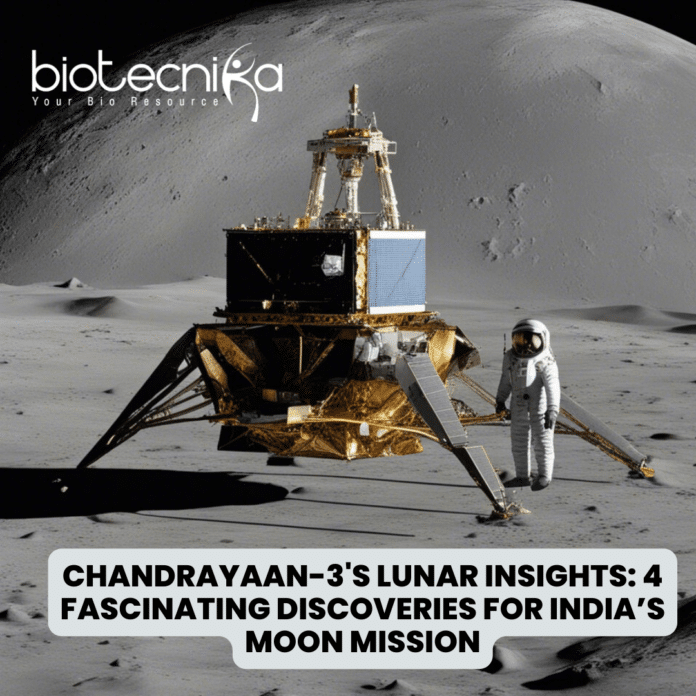Chandrayaan-3’s Lunar Insights: 4 Fascinating Discoveries for India’s Moon Mission
Chandrayaan-3’s Lunar Insights: 4 Fascinating Discoveries for India’s Moon Mission. India’s Chandrayaan-3 mission has revealed some remarkable insights about the Moon. Let’s delve into these findings in simple terms.
1. Lunar Ionosphere – A Thin, Electric Soup:
During its journey, Chandrayaan-3’s Vikram lander measured the Moon’s ionosphere’s density and temperature. This ionosphere is like a thin layer of electrically charged particles surrounding the Moon’s surface. It turns out this layer is relatively sparse compared to Earth’s upper atmosphere, with a density ranging from 5 million to 30 million electrons per cubic meter. This could be good news for future lunar communication and navigation systems, as minimal electron density means shorter signal delays.
2. Lunar Seismic Activity:
Chandrayaan-3’s seismograph recorded various vibrations, but one event caught scientists’ attention. It seemed to be a minor seismic occurrence, potentially either a moonquake or the result of a minuscule meteorite impact. Such occurrences are anticipated on the Moon, but a broader seismic network and more extended observations are needed to fully understand their significance.
3. Lunar Soil Temperature:
Understanding the Moon’s soil is crucial for potential lunar settlements. Chandrayaan-3’s lander is outfitted with temperature
4. Confirmed Presence of Sulfur:
The rover conducted examinations that verified the presence of sulfur, in addition to aluminum, silicon, calcium, and iron, on the lunar surface near the south pole. This discovery is particularly captivating because sulfur plays a crucial role in the composition of molten rock. Scientists theorize that the early Moon might have been enveloped in a substantial layer of scorching molten rock, which subsequently solidified to form its surface. Investigating the concentrations of sulfur can provide valuable insights into this process and the lunar geochemistry as a whole. It’s also conceivable that the sulfur originated from asteroid impacts on the Moon. The findings from Chandrayaan-3 will contribute significantly to our comprehension, complementing the data gathered during the US Apollo missions. In summary, Chandrayaan-3’s mission has provided valuable insights into the Moon’s ionosphere, soil, seismic activity, and surface composition. These discoveries are not only scientifically significant but also crucial for future lunar exploration and potential human settlements.



























